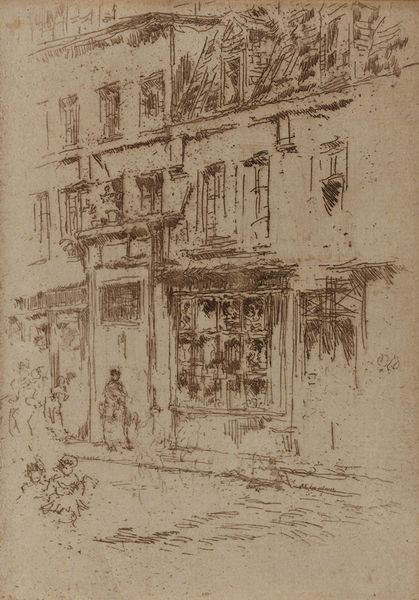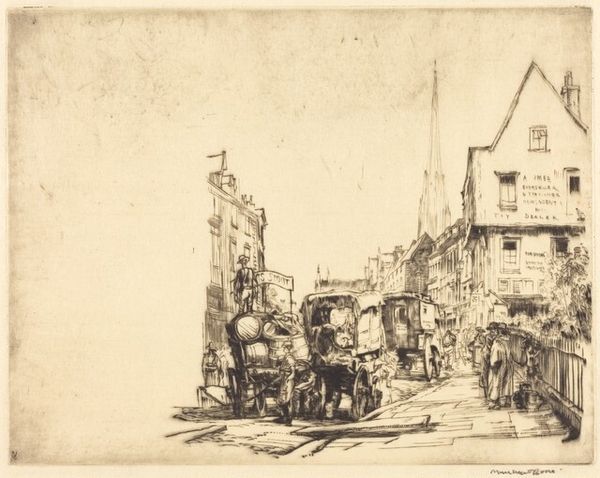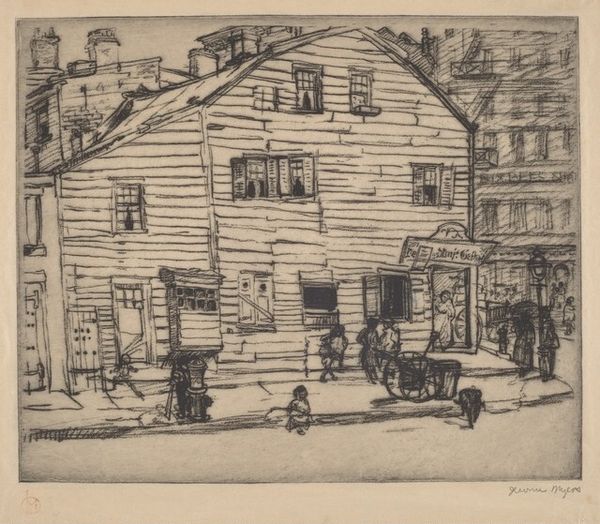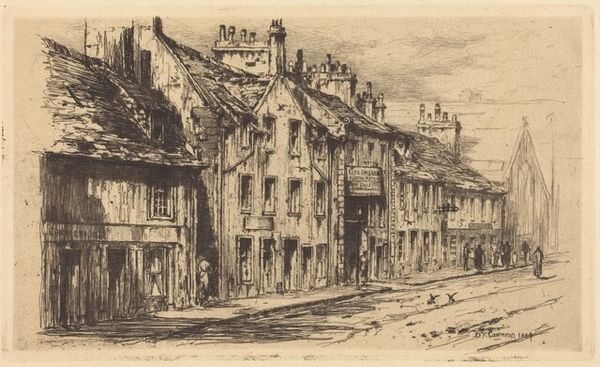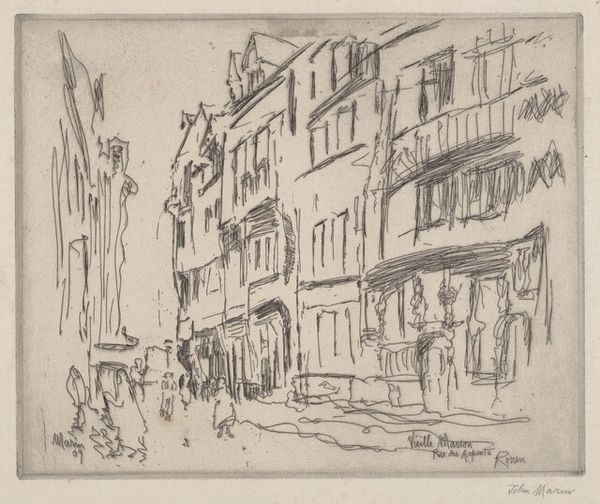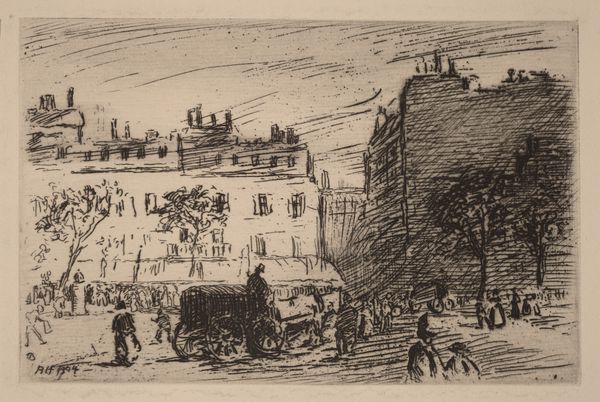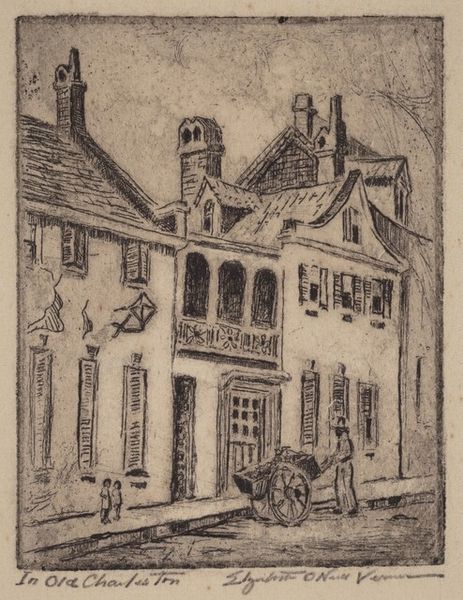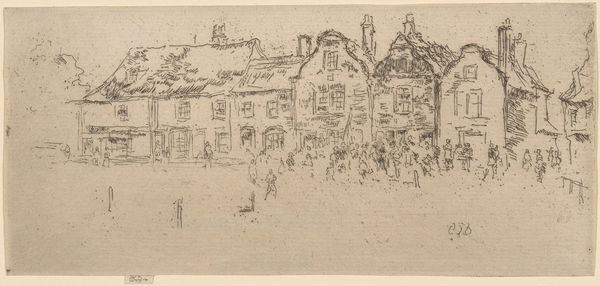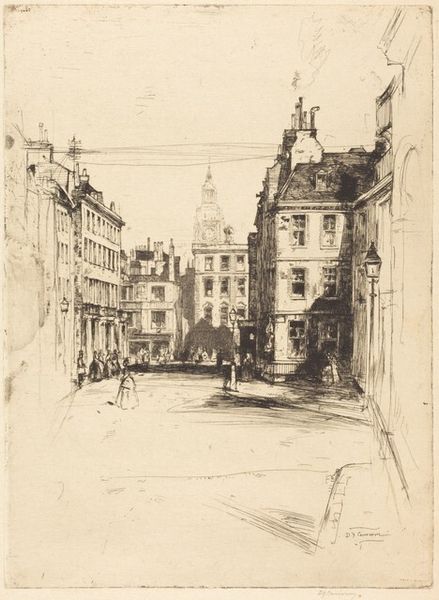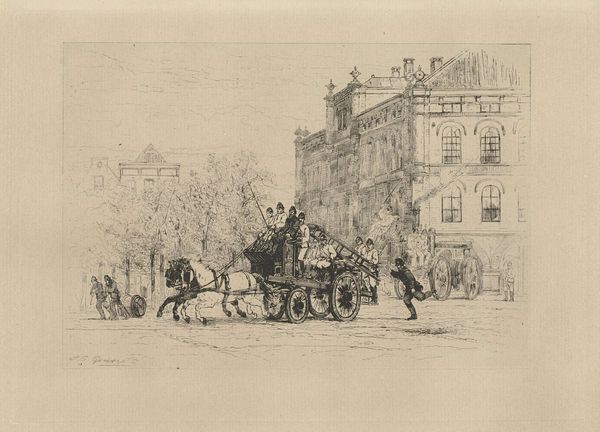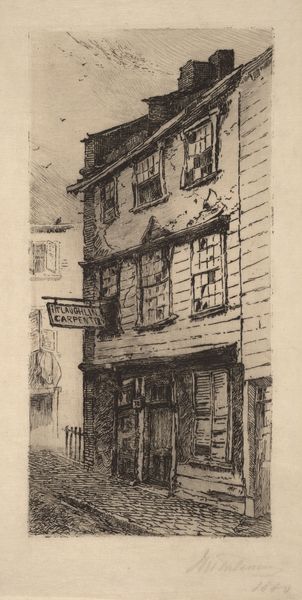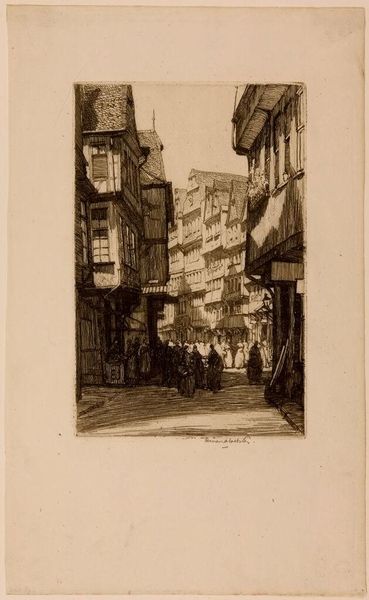
drawing, ink, pencil, graphite, pen
#
portrait
#
architectural sketch
#
drawing
#
aged paper
#
toned paper
#
street-art
#
mechanical pen drawing
#
pen sketch
#
sketch book
#
personal sketchbook
#
ink
#
sketchwork
#
pen-ink sketch
#
pencil
#
line
#
pen work
#
graphite
#
pen
#
cityscape
#
realism
Dimensions: overall: 28.9 x 39 cm (11 3/8 x 15 3/8 in.)
Copyright: National Gallery of Art: CC0 1.0
Editor: We're looking at "East Lombard Street, Baltimore" by Aaron Sopher. It appears to be a pen and ink drawing, maybe with some graphite mixed in. There’s a fascinating roughness to the linework, like a quickly captured impression. It makes me wonder, what visual elements stand out to you in this piece? Curator: The immediacy of the linework is certainly compelling. Consider how Sopher uses varied line weights – thicker, darker strokes delineate the figures and architectural forms in the foreground, while thinner lines suggest depth and receding planes. Notice too, how the composition guides our eye, using a subtle, yet effective, structural arrangement to lead us through the scene. Editor: So, you're focusing on how the lines create structure and depth. I see the variation, but how does that variation itself contribute to the piece’s overall effect? Curator: Precisely. It's not merely variation for its own sake. The contrast emphasizes the spatial relationships within the artwork. Examine how the texture of the aged paper, the tonal range from light gray washes to almost black pen strokes—these formal properties create a sense of atmosphere and a unique visual texture. Also observe how areas remain incomplete, the suggestion, rather than explicit detail. Editor: That incomplete feel does give it an energetic, ‘in progress’ vibe. Would you say that's a key element then - this sense of dynamic creation through line and texture? Curator: Indeed. Sopher's manipulation of line, tone, and the inherent qualities of his chosen media generates that distinct impression. It asks us to consider drawing not just as representation, but as a vital record of artistic process itself. What is your understanding now? Editor: I hadn't considered it that way, focusing on the technique to understand the energy and artistic process. It definitely gives me a new appreciation for what drawing can communicate. Curator: I’m pleased to have shared this interpretation, emphasizing its intrinsic formal qualities to further illuminate the visual composition.
Comments
No comments
Be the first to comment and join the conversation on the ultimate creative platform.

